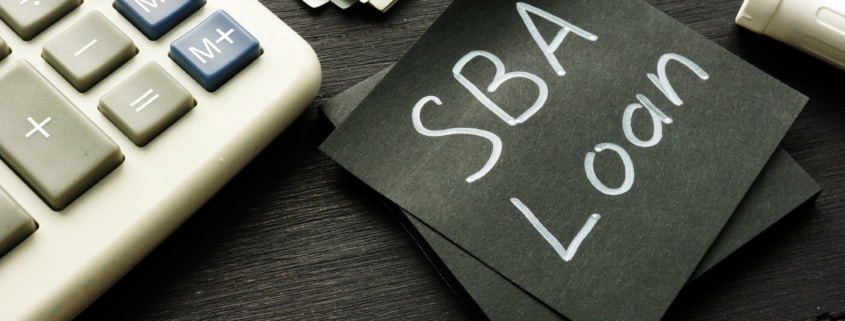An effective means to expedite a business’s growth is tactical commercial financing. A factor that may dissuade businesses from finalizing a loan agreement, however, is fear of default and the subsequent recourse from lenders. There are actually several types of loans where lenders will agree to not seek recourse after borrower default, which are known as non-recourse commercial loans.
What is Non-Recourse Loan Financing?
A non-recourse commercial loan is an agreement between a lender and a borrowing business where the borrower is not personally liable if they default on the loan. In the case a borrower defaults, lenders may not repossess any of the borrower’s property that was not originally put up for collateral. Lenders may seize profits from the business, but the business owner’s personal assets may not be taken.
What is The Difference Between a Recourse Loan Versus Non-Recourse Loan
Traditional recourse loans require borrowers to make a personal guarantee that they default on their business loan, the lender may seize bank accounts and other assets until the original debt is covered. In the case of a non-recourse loan, lenders may only seize agreed upon collateral in the event of borrower default. Even if the collateral does not sufficiently cover the full value of the loan, the lender cannot seize the borrower’s personal assets to recover losses from the original loan.
Benefits 0f a Non-Recourse Commercial Loan
Non-recourse commercial loans come with various benefits for small business owners, including:
- Limited personal liability in the event of a default as the loan is typically backed by collateral
- Asset protection for businesses outside of assets used to back the non-recourse commercial loan
- Relatively low financial risk while still securing financing
Carve-Outs and the “Bad Boy Guaranty”
Most non-recourse financing agreements have exceptions where the lender may collect beyond collateral in the case of borrower default. Exceptions to non-recourse agreements are called “carve outs,” or “Bad Boy Guarantees.” Most carve outs protect lenders in the case a borrower either misrepresented their intentions or committed a crime. Several common carve outs in non-recourse financing agreements allow the lender to seek recourse outside of collateral, including:
- Borrower files for bankruptcy
- Borrower commits fraud or other criminal activity
- Borrower fails to pay property taxes
- Borrower fails to maintain required insurance
If a borrower commits any of the acts specified in an agreement’s carveout clause, the non-recourse protections of the original agreement are nullified.
Qualifying for Non-Recourse Financing
Since non-recourse commercial loans are much riskier for lenders, conditions for approval are generally much more strict. Among traditional qualifications of positive balance sheets, a good business credit score and sufficient collateral, applicants must also meet the terms of a non-recourse guarantee. Similar to carve outs, the non-recourse guarantee specifies that the borrower, or the guarantor, must maintain certain obligations to retain non-recourse status.
A non-recourse lender may require that the borrower sign a guarantee of performance, meaning that certain goals remain on schedule, or a guarantee of payment. Guarantees of payment stipulate that any profits made from the project financed by the original loan must be routed back to pay the accrued debt.
Since lenders face significantly more risk when making a non-recourse loan, non-recourse agreements are generally reserved for exceedingly low risk-of-default borrowers taking on long-term projects.
Types of Non-Recourse Commercial Loans
Real Estate
The most common type of non-recourse financing is non-recourse real estate loans. In the case of real estate loans, non-recourse deals commonly stipulate that the borrower must pay back the loans with profits made after selling the real estate – which is a guarantee of payment. If the property is developed, but does not sell or does not make a profit, the real estate itself is often considered sufficient collateral.
SBA
Non-recourse loans secured by the SBA are traditionally used to help small businesses secure financing for fixed assets such as real estate, office facilities and sometimes equipment. To decrease the direct risk for lenders, the SBA assumes a portion of the risk for the loan and guarantees to cover a percentage of a loan’s full amount in the case of borrower default. If a borrower defaults on a SBA-secured non-recourse commercial loan, the government, not the lender, is liable for the guaranteed portion of the loan.
Development
Another common type of non-recourse commercial loan are non-recourse development loans. Development loans are specifically for developing commercial property and often finance a project through its entire process. Development loan agreements usually state that the borrower must begin repayment once they have started earning a profit. If a project is not profitable or does not complete development, then the loan will often be considered defaulted. When a non-recourse development loan defaults, the property which was financed will then be seized as collateral.
Non-Recourse Factoring
Similar to non-recourse loans, non-recourse factoring agreements stipulate that in the event an invoice cannot be paid, the factor is liable for the losses, not the customer. Non-recourse factoring agreements, however, tend to have higher fees and/or more restrictive terms because the risk is much higher for the factor. Factors are more likely to offer non-recourse invoice factoring services to customers who handle a large and constant flow of invoices and whose clients have good credit. Depending on a company’s size and invoice capacity, recourse and non-recourse factoring are both viable options. Lenders also may consider the size and volume of a customer’s invoices before offering non-recourse factoring options.
Non-Recourse Overview and Considerations
Non-recourse financing may be a misleading name for this kind of financing, as almost every type of non-recourse deal still allows lenders to seek recourse of some kind. Non-recourse agreements are almost always reserved for deals where lenders can recoup their losses without additional recourse. However, semantics aside, if you’re able to qualify for non-recourse financing it can be a great way to keep your business on the growth track.
Non-Recourse Commercial Loan FAQs
What are the disadvantages of a non-recourse loan?
Because non-recourse commercial loans can saddle the lender with higher risk, the lender will usually offer lower loan amounts or require higher interest rates for these types of loans. Compare rate and terms of non-recourse and recourse commercial loans before choosing a type of financing.
How hard is it to get a non-recourse commercial loan?
Qualifying for a non-recourse commercial loan could be more difficult than qualifying for other types of small business financing. This could include higher business and personal credit score requirements.








